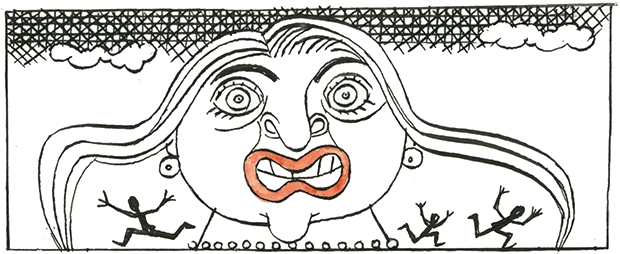Zaha Hadid is the most famous woman architect in the world. Would women, or, indeed, architecture, be better off without her pushily hard-won, global celebrity?
She established her studio in London in 1980. For nearly fifteen years Hadid, absurdly, became famous for not actually having built anything. Instead, her reputation was boosted by a clique of fawning admirers who saw in her uncompromising angles and, later, zoomorphic blobs a fearless repudiation of stuffy tradition.
The competition entry for Cardiff Opera House was her celebrated cause. This, with genius, managed to alienate both the left and the right. The former thought it elitist, the latter outrageous. It was, after years of well-publicised struggle, abandoned in 1995. She became a martyr to taste and sexism.
At about the same time, Hadid’s first real building emerged above the ground. This was a tiny fire-station in a Swiss-German furniture factory whose shrieking concrete angles and disruptive interiors photographed very well and were dutifully recorded in the parish magazines of architecture, but were not much liked by the actual firemen. It was de-commissioned and is now an exhibition centre.
As if in revenge for years of neglect, Hadid now began a global strut in billowing drapery by Prada or Issey Miyake. She became the champion of an architecture that was more about personal ‘vision’ than public utility. There was a science centre in Wolfsburg and a BMW factory in Leipzig. Karl Lagerfeld had her design a pop-up exhibition for Chanel and, accordingly, she made it look like a quilted handbag.
Critics mumbled that she had no sense of context or locality, preferring to crash land photogenic concepts whose function was not to serve her client’s needs, but to advertise her own status as a ‘global architect’. Her fabulous, zoomorphic forms were always eye-catching, but often difficult to build. And almost always, so neglectful was she of tectonic practicalities, that her buildings went deliriously over-budget. The 2012 Olympics Aquatics Centre, drowning in debt and impracticality, was described by an official as a ‘joke’. For the same reason of doubling cost, a fatigued Shinzo Abe has just canned her design for the 2020 Tokyo Olympic Stadium.
But there were other reasons Hadid’s Tokyo stadium was a bad design: it resembled a monstrous acrylic helmet cycling helmet. But why ? Two of the grand old men of Japanese architecture, Arata Isozaki and Fumihiko Maki, damned her design as monstrous and wasteful. And, more damagingly still, they said it was conceived with neither respect nor reference to its locality. That, of course, was almost certainly her intention. ‘Global Architects’ like Hadid do not want to respect their client or his site, but to venerate themselves.
In any case, the localities Hadid often prefers are the backyards of dictators and tyrants. Her latest buildings always win approval from supine architecture and design media, so work very well as salvation-via-design for repressive regimes. She has projects in various stages of completion or disarray in Libya, Iraq, Russia, Qatar, China and Azerbaijan.
The Qatar case, already soiled by the sordid FIFA shenanigins, is interesting. From the air, Hadid’s 2022 World Cup stadium with its almond-shaped opening and labial folds looks bogglingly like giant pudenda. Someone mentioned this and she said, if you think anything with a hole in it is a vagina, that’s your problem.
Zaha Hadid has added much to the formal language of global architecture, but not to its good sense or decorum. This much was proved today when it was announced she had won the RIBA Gold Medal. Accordingly, Hadid appeared on the Today programme where she put in a bravura performance as an indignant termagant, bringing an interview that began in a spirit of generosity to a conclusion that was acridly bitter. Listeners may have formed opinions of their own about Hadid’s intractable views, aggressive demeanour, lack of charm and ocean-going bitterness.
Like Jonathan Miller, who has received every award and distinction appropriate to his achievements, Hadid feels resentful and wronged. She told Today listeners she was a victim of sexism because she cannot join clubs. Well, she can certainly join the Athenaeum and that’s not too shabby. And the RIBA which has just decorated her is the best architectural club in the world.
Then, with the Gold Medal glinting metaphorically in the background, our pantomime Dame suggested that something called ‘The Establishment’ had thwarted her career. The fact is that Hadid’s career has been vigorously promoted by a venerable and grandly ennobled architectural establishment which includes Richard (Lord) Rogers (82), Norman (Lord) Foster (80) and (Sir) Peter Cook (78).
With budgets out-of-control, questionable functionality, ludicrous ‘featurism’ and an intemperate and headstrong personality, Zaha Hadid has, alas, confirmed many popular prejudices about architecture and architects. She may also have, damagingly, confirmed prejudices about what happens when a woman is scorned.






Comments